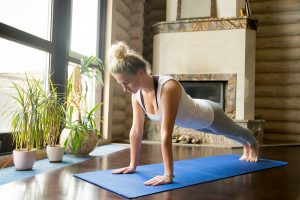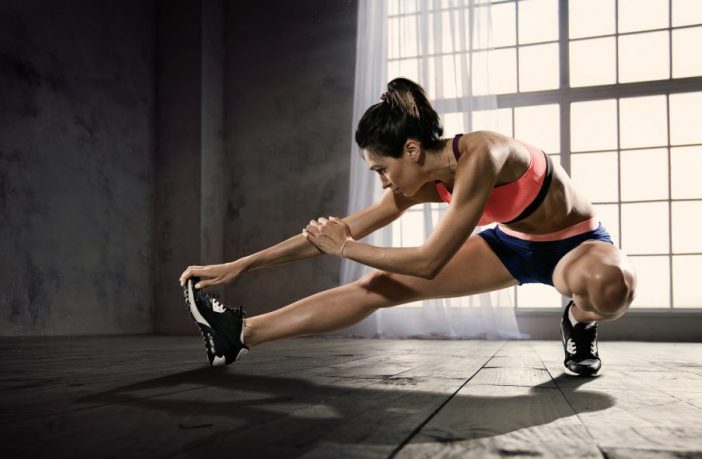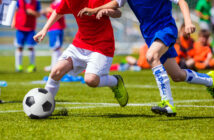In 2017 we saw the continued popularity of high intensity interval training (HIIT), strength training and group training. The success of parkrun, free 5 km running events held in over 500 parks, showed that people are interested in coming together in shared exercise experiences. Parkrun now has over 120,000 participants supported by 10,000 volunteers and is regularly prescribed by health professionals as a means of improving health and tackling medical conditions.
So, what trends might we see in fitness for 2018? Lecturer in Sport and Fitness Simon Rea takes a look…
1) Speed up recovery time for improved results
HIIT and strength training are both high intensity activities and as a result can cause muscle soreness due to the overload placed on muscle groups. Muscle soreness is the result of microtears in the muscle fibres and, along with the resulting inflammation, can be debilitating. Muscle soreness can persist for three to four days, during which time additional training is too painful to be an option. Therefore, any techniques that increase the recovery time of muscles will mean that another training session can be undertaken sooner.

Ice baths can help muscles recover; but a cool shower or bath could be more appealing
Athletes use ice baths and other cryotherapy methods to reduce muscle inflammation. Sitting in a bath of ice cubes may not be too appealing or practical and recent research shows cool water, at 10-13 degrees, is cold enough (Lovett, 2016) to reduce inflammation and fatigue.
The advice is to have a cold shower or bath for 10-13 minutes to gain maximum benefit. However, Bleakley et al (2012) found that ice baths were mildly effective at reducing muscle pain but not any more effective than massage, light jogging or compression garments.
Nutrition has a huge part to play in recovery with a post-workout snack in the first 15-20 after exercise being crucial in replacing glucose stores in the muscles. However, antioxidant nutrients that reduce inflammation in the body are also seen as being crucial to recovery. Antioxidants include vitamins A, C and E as well as minerals zinc and selenium and they act to reduce the damage that oxygen does to joints and muscles. Recently antioxidant rich foods, curcumin (derived from turmeric) and Montmorency cherry juice were identified as having a role to play in reducing post-exercise muscle soreness (Hamilton, 2017).
2) Stretching classes
Post-exercise stretching has always been a popular recovery technique; however, how many of us do it effectively or at all? Unfortunately stretching is not as much fun as training, it is painful and done when we are tired at the end of a session and just want to go home. Increasingly stretching classes, where you partner up and stretch each other, are being offered by gyms and personal trainers are becoming personal stretchers. For some reason while we don’t like inflicting the pain of stretching on ourselves we don’t mind other people doing it to us!
As well as aiding recovery stretching has become a big issue as sedentary jobs can cause changes in our posture, due shortening of the hamstrings and chest muscles and resulting lower and mid back pain. Stretching will improve flexibility and range of motion at joints and combat adaptive shortening of muscles.
3) Body weight training

body weight exercises can be easy to do at home
Body weight exercises involve exercises such as press ups, squats and bench dips have been promoted this year as a means of strength training. Stamakis (2017) reports research findings that individuals who met the strength training guidelines through body weight exercise reduced their risk of death from cancer by 31%.
Alongside the health benefits body weight training is popular as it can be done at home and is requires little specialist equipment. L. J. Flanders provided an interesting spin on body weight exercise when he published his 2016 book Cell Workout where he presents the exercises he used while he was incarcerated. It shows that all you need for a good workout is a bit of space and a fertile imagination.
4) Environmentally friendly equipment
At long last we are seeing eco-friendly treadmills, cross trainers and exercise bikes on the market. American company Sports Art are marketing equipment that converts the energy created when we run or cycle into utility grade electricity. They work in a similar way to solar panels or wind turbines and can be used to offset energy costs in private homes or gyms. Can you imagine the potential energy saving for gyms who 50 treadmills or cross trainers as the equipment powers itself, returns energy to the national grid and harnesses the energy we are burning off during our workouts?
While the fitness industry is continually adapting and technology remains to the fore I am hoping that this is the year we see more fitness chains and individuals employing exercise psychologists to help people become and remain active. For years, gyms have embraced goal setting and other techniques but long-term behaviour change needs to be based on an individual approach to understanding motivational and psychological barriers that prevent long-term engagement with exercise.
Find out more:
- Explore sport and fitness on our free learning portal OpenLearn
- Study sport and fitness with The Open University
- Follow The Open University sports and fitness degree team on Twitter



